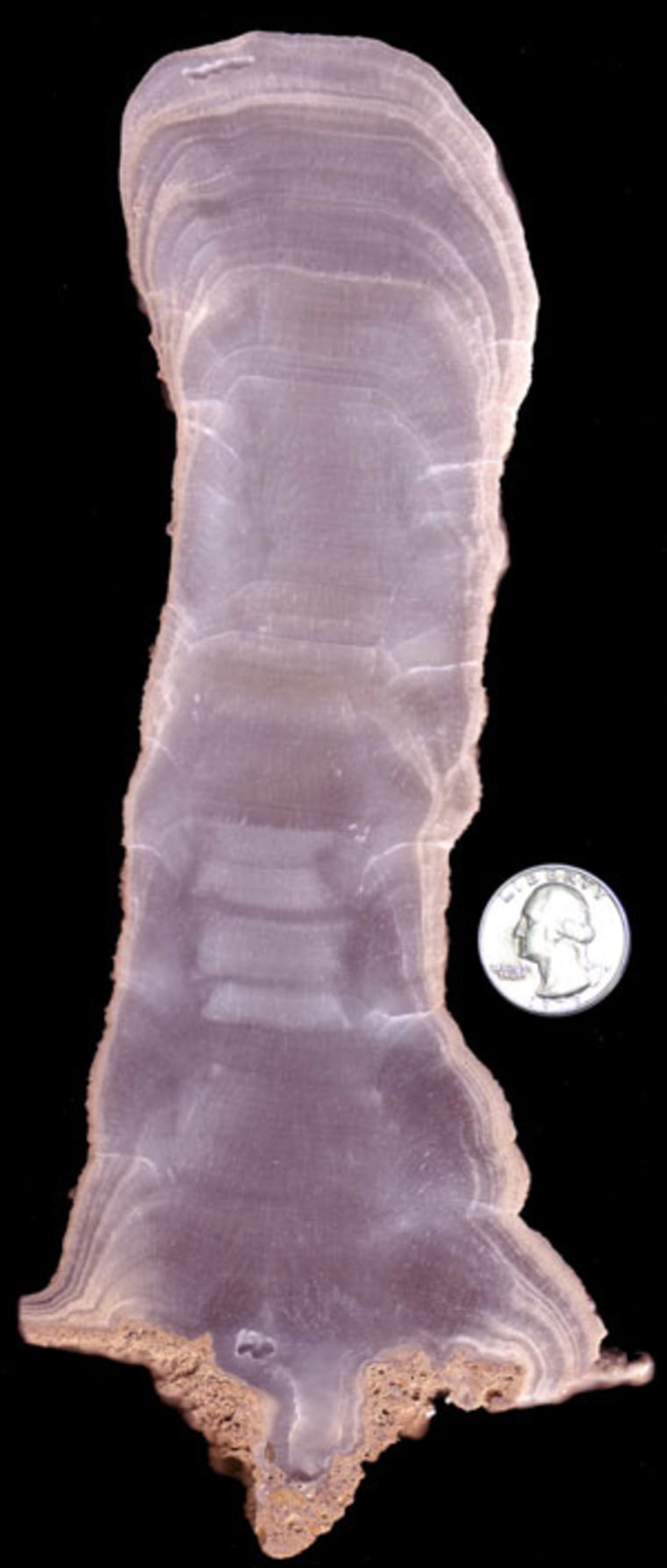Dips in the sun's activity have triggered centuries-long droughts in eastern North America, according to a new study that examined the geologic record stored within a stalagmite from a West Virginia cave.
The link between periodic droughts and changes in solar activity initially was proposed by geologist Gerald Bond. He suggested that every 1,500 years, weak solar activity caused by fluctuations in the sun's magnetic fields cooled the North Atlantic Ocean and created more icebergs and ice rafting, or the movement of sediment to the ocean floor. This caused less precipitation to fall, creating drought conditions.
The climate record preserved by trace elements such as strontium, carbon and oxygen in stalagmites is clearer and more detailed than records previously taken from lake sediments. During dry periods, strontium is concentrated in stalagmites. Carbon isotopes also record drought because drier soils slow biological activity.
For the new study, researchers cut and polished a stalagmite taken from Buckeye Creek Cave and drilled out 200 samples. The metals and isotopes in the stalagmites' growth layers were weighed and analyzed to determine how the concentrations changed over time.
The stalagmite's record provides evidence that there were at least seven major droughts during the Holocene era in eastern North America. Some of these, from about 6,300 to 4,200 years ago, were particularly pronounced, lasting for decades or even entire centuries.
"This really nails down the idea of solar influence on continental drought," said geologist Gregory Spring of Ohio University and the study's leader. The results of the study are detailed online in the journal Geophysical Research Letters.
Modern droughts may not follow this same pattern of periodic long-term droughts caused by weak solar activity, as cooling in the North Atlantic Ocean today actually increases moisture and precipitation.
The climate record does suggest that North America could face a major drought event again in 500 to 1,000 years, though Springer said that human-induced global warming could offset the cycle.
"Global warming will leave things like this in the dust," he said. "The natural oscillations here are nothing like what we would expect to see with global warming."
In fact, new research from the University of Arizona in Tucson has linked human-driven changes in the westerly winds to drought conditions in the American Southwest, which has been plagued by drought for much of the last decade.
Since the 1970s, the winter storm track in the western United States has shifted northward, bringing fewer winter storms and less rain and snow to the region, the researchers found. This precipitation deficit can affect water resources later in the year and cause more and larger forest fires.
These findings will also be detailed in Geophysical Research Letters.
